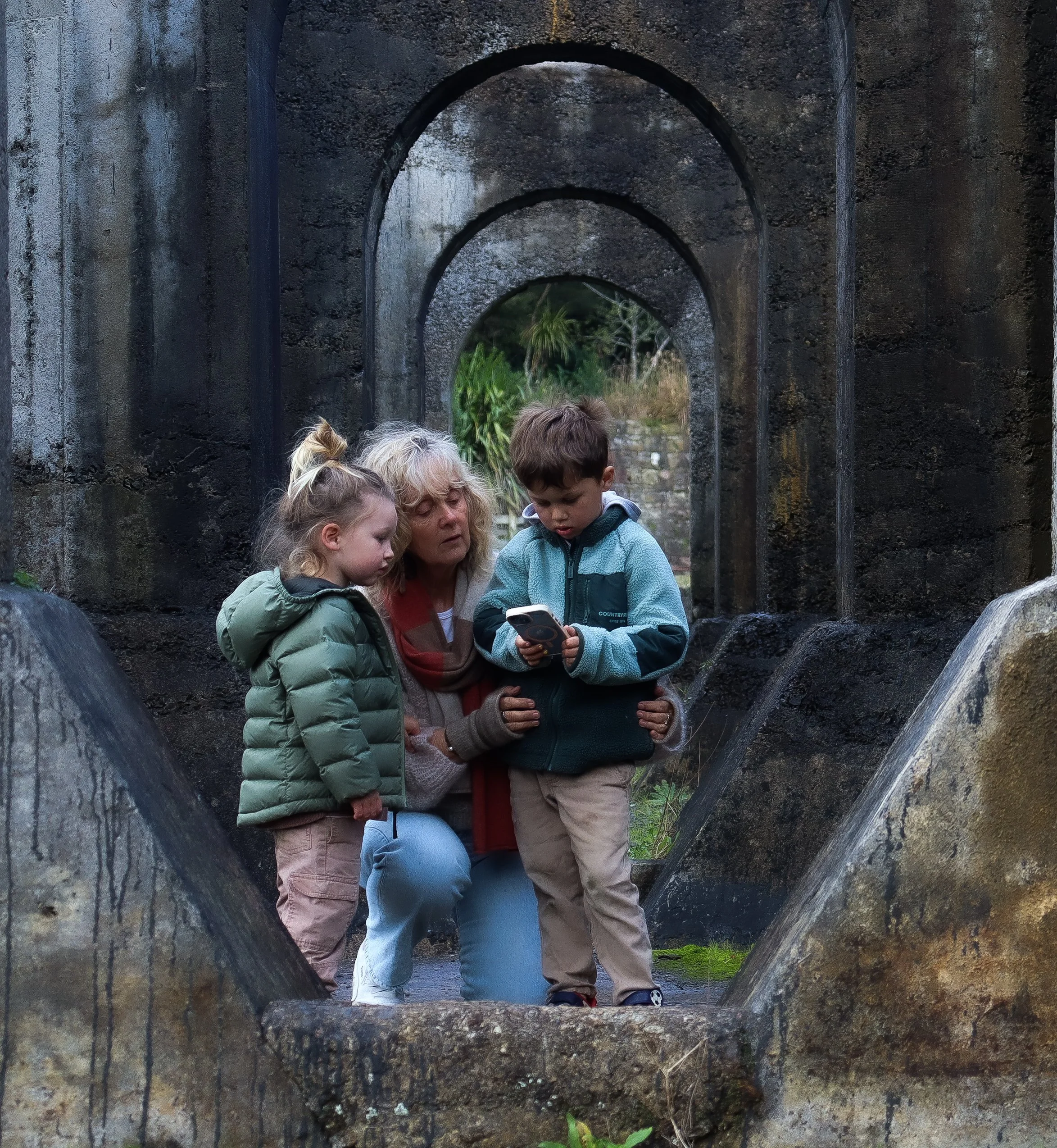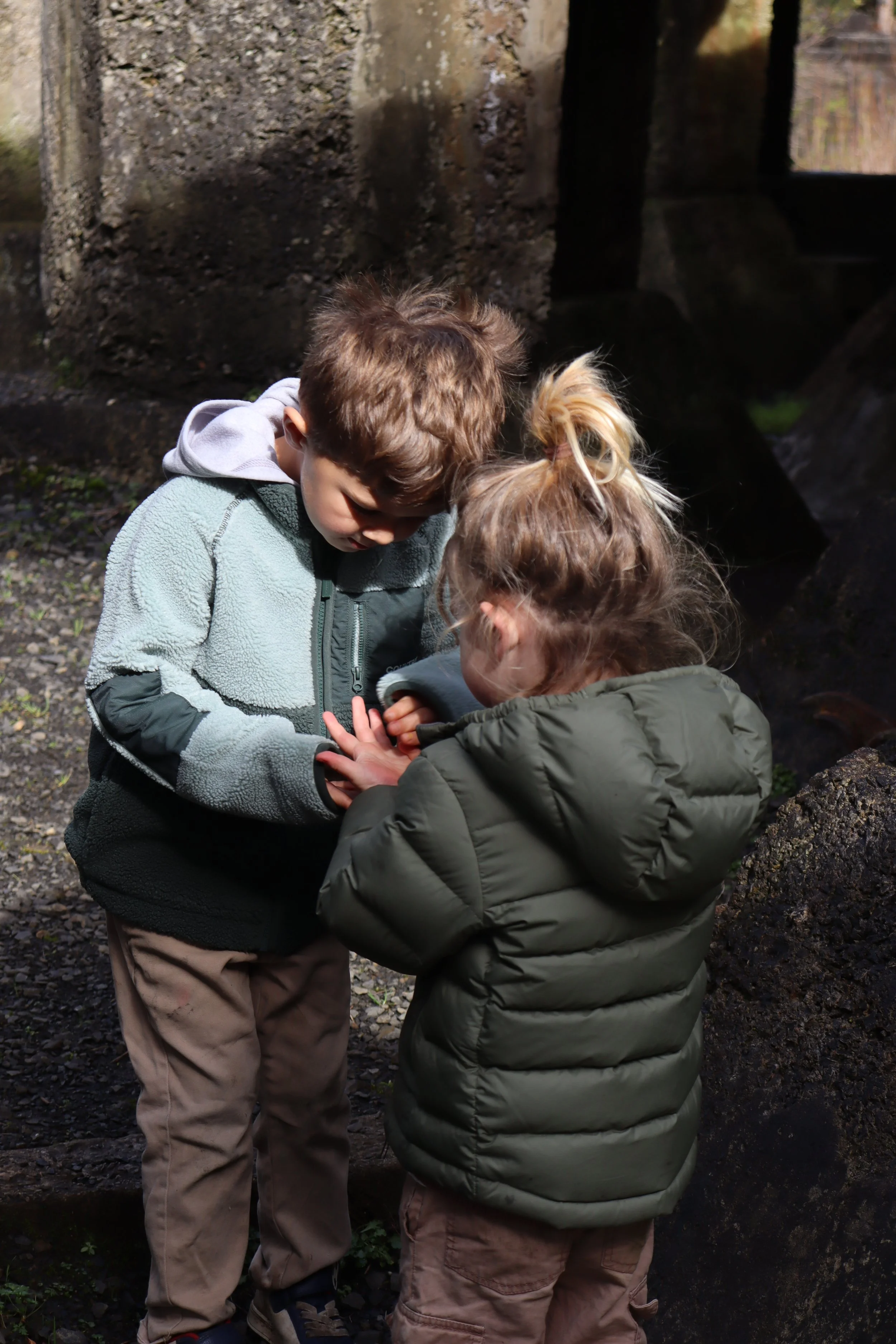Anchoring Tamariki: The Look of Love in Everyday Transitions
Are there times when you hear the saying, “You don’t know how lucky you are!”? Well, I do know. I am one of the luckiest Nanas ever. My moko all live nearby, some even live with me. What a… I was going to say privilege, but that word doesn’t quite capture the depth of emotion that comes with being part of a loving whānau.
Recently, my son Jordan and his partner Abbey went on holiday, which meant I was on what I first called Nana duty. What a terrible choice of words, that week was nothing short of being wrapped in an aroha sandwich with two incredible moko for eight days. The sandwich analogy comes from sharing a bed with my 2- and 4-year-old moko, Archie and Ollie. I’m sure you can imagine the snuggles… and the squish!
During the week, the boys still attended daycare as usual or almost as usual. It’s never quite the same when Nana is doing drop-offs, especially when Mum and Dad are away. The first morning was rough for Archie, the two-year-old. Meanwhile, Ollie breezed into the centre, found his friends, and was ready to go.
But Archie? The moment we arrived, he realised we weren’t off to the park, beach, or for ice cream. Despite all the morning conversations to help him picture the day ahead, the change in routine hit him hard. Archie likes predictability.
So there I was Nana, dropping off a now-upset moko at a centre I hadn’t visited often, with kaiako I didn’t know and routines I wasn’t familiar with. It struck me that maybe I like routine and predictability too. Sorry, Archie, it must be in the DNA.
The second day went smoothly. Archie knew what to expect. The rest of the week unfolded gently, with both boys heading into the centre full of anticipation for the day ahead.
Then Friday came.
That morning, Archie settled easily. But for Ollie, things were different. It was a cold day, and as we entered his room, he looked at my mohair fingerless gloves and asked if he could wear them. “Sorry, not today,” I replied. Next, it was my scarf. “Can I have that?” This wasn’t about gloves or scarves. This was Ollie saying, I don’t want to let go today.
He was feeling disconnected and was reaching out, grasping for anything to anchor him. We wandered through the centre while I gently asked, “What would you like to start your day with?” We explored outside, then came back in. We sat at the playdough table, watching other tamariki at play. But Ollie stayed close. He wasn’t quite ready to join in. What settled Ollie that day, the kindness of a kaiako that could see his need for connection.
These moments were hard for Ollie and Archie and for me.T hey reminded me how important it is to anchor tamariki into their day. To see and respond to those moments of vulnerability with tenderness and patience. To recognise that sometimes, it’s not about the playdough or the gloves it’s about connection.
In those moments of transition, what tamariki often need most is an anchor, someone familiar, calm, and emotionally attuned, who can help them feel safe enough to let go. This is often a team approach. Imagine, for a moment, the playdough table or some other provocation being offered to tamariki, with a kaiako present, watching for the cues of tamariki entering and needing an anchor. The warm welcome of the kaiako into play is a bridge that the anchoring kaiako offers to transition the tamaiti and the whānau.
It takes a team, a team that sees the importance of this role and ensures that the anchoring kaiako is freed up from the busyness of thinking about ‘what next’. This commitment to the anchoring role speaks to the values of manaakitanga, whanaungatanga, and aroha. These values are not just abstract ideas they live in everyday gestures, like a kaiako kneeling to meet the eyes of the tamaiti, offering quiet reassurance, or simply holding space for a tamaiti to find their feet again or to be truly seen in the moment.
When a kaiako becomes that anchor for a tamaiti, they are upholding their mana and foster a sense of ūkaipotanga, a place where they belong, where their voice is heard, and where they can contribute to everyday decisions. Te Whāriki supports this, emphasising that “children experience an environment where they know that they belong and have a sense of connection to others and the environment.” Anchoring tamariki in this way is not about rushing to fix or distract, it’s about slowing down, tuning in, and honouring the whakapapa of emotion that lives within each tamaiti.
Anchoring Tamariki: The Look of Love in Practice
Reflecting on my week with Archie and Ollie, I found myself returning again and again to the idea of anchoring tamariki into their day, not just through routines, but through presence, empathy, and connection.
These real moments align deeply with the intention of our Settling In Policy, which recognises the importance of emotionally safe transitions and the need for kaiako to be consistent, available, and responsive during these times.
Our policy affirms that settling in is not simply a procedural process it is a relational one. It acknowledges that the emotional needs of both tamariki and whānau must be held with care, and that kaiako play an active role in creating a space of ūkaipotanga, a place of belonging and emotional security.
In a recent article titled The Look of Love, I wrote, “It is about anchoring the mokopuna in love… not the sole provider of aroha, but a key contributor to the shared responsibility of nurturing the whole being of the mokopuna.” This captures exactly what I witnessed and felt during those transitions with my moko, how deeply they need someone to hold them emotionally as they navigate a moment of vulnerability. Whether it was Ollie reaching for my gloves or Archie melting into tears, they were asking: "Will someone hold me here?"
Our Settling In Policy calls kaiako to be that “someone” not just during the initially transitions but in the ongoing transitions into the setting daily. This is offering what is referred to as the loving gaze, “moments of genuine, unconditional presence where a mokopuna feels truly seen and heard.” This kind of attunement is a daily invitation for kaiako to slow down, tune in, and respond with warmth and care. This is vital. The response from the kaiako needs to be authentic, a genuine response of aroha, acknowledging that the day-to-day emotional terrain of the individual tamaiti might look different. We cannot rely on rolled-out phrases and distractions, but rather we must be responsive to the moment.
Who holds the loving gaze? Who anchors the tamaiti when they are feeling a little wobbly?
In my experience with my moko, I came to see this more clearly than ever. Transitions are not just about getting through the door they are sacred opportunities to build trust, reinforce identity, and hold space for the emotions that arise.
As a Nana, and as someone who walks alongside kaiako, I am reminded that the smallest moments often carry the deepest meaning. To anchor a tamaiti is not just to ease a transition it is to offer them a sense of being seen, heard, and loved.
So let us ask ourselves who holds the loving gaze in our settings today? Who anchors our tamariki in moments of vulnerability? And how might we, as a team, ensure no tamaiti is ever left without that steady hand, that warm presence, that sense of being seen?



